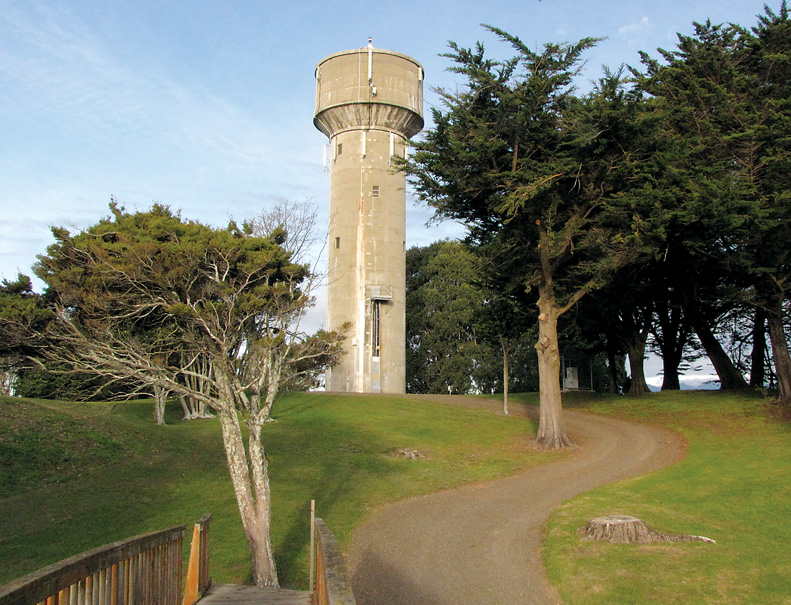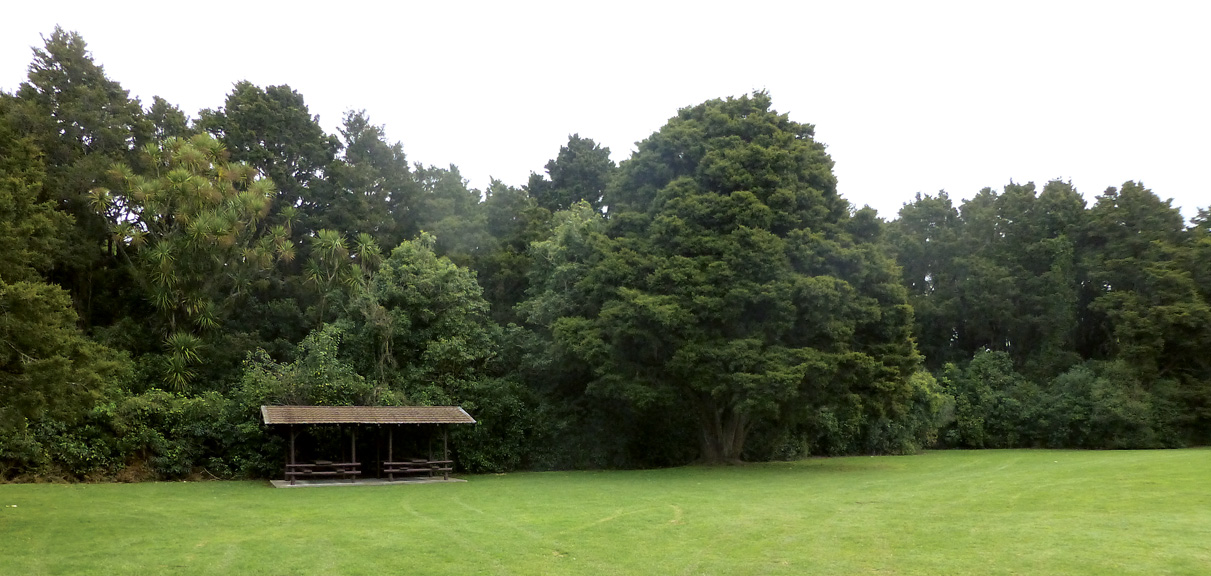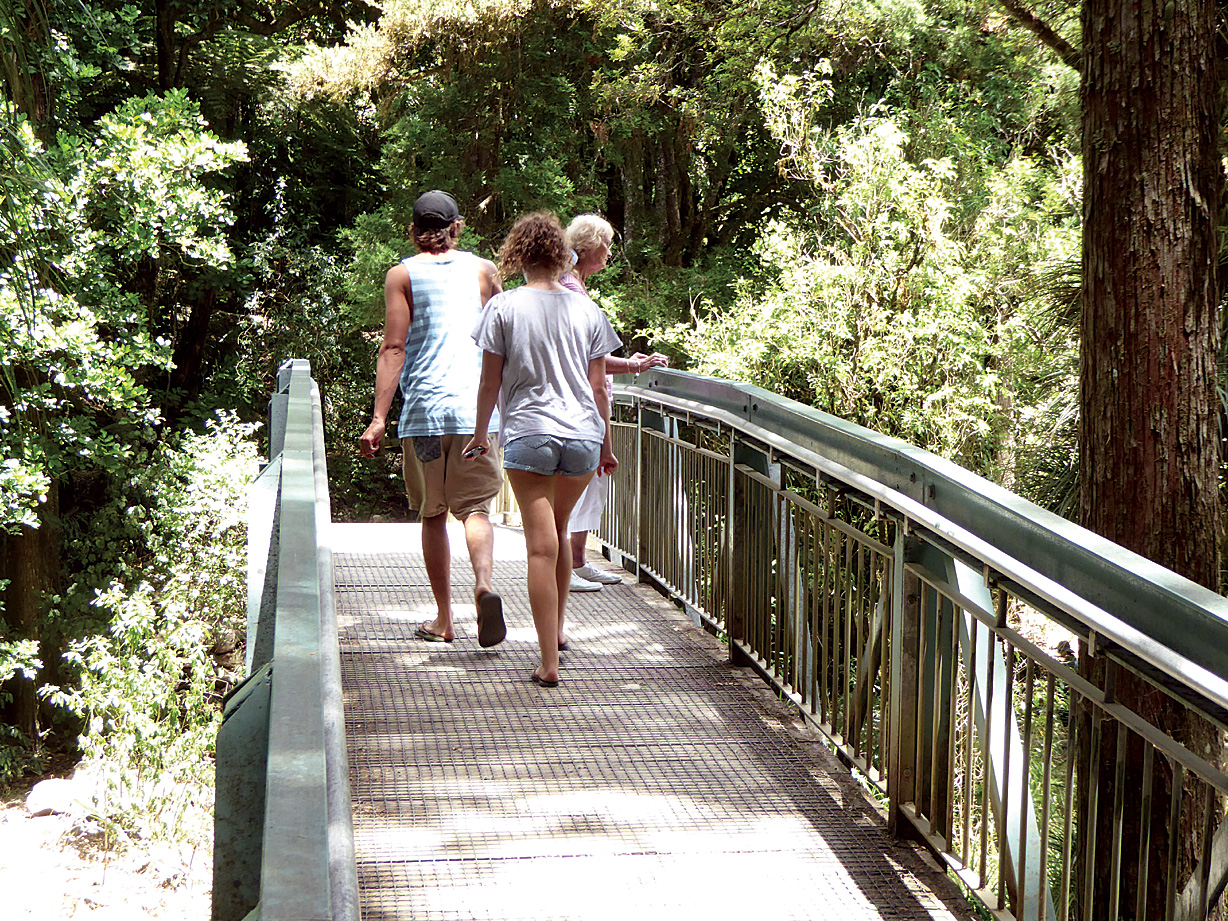
Judith Doyle explores Napier’s past
The 1½ hour Art Deco walk in Napier is more a saunter than a walk. It has to be, because every few metres during the 1.2km walk there’s another zig-zag, sunburst or ziggurat to look at. And they are often at neck-cricking level.
There’s two ways to explore Napier’s past. You can pick up a self-guided map and make your own way around. Or, like our group of 10, you can choose to join a guided walk.
It was way back in 1985 when a leaflet called Take a Walk through Art Deco Napier started the tradition.
It had been published by a group who were keen to preserve Napier’s 1930s buildings which had gone up after the earthquake when the Art Deco, Spanish Mission and (a bit later) the Moderne style of architecture was in vogue.
More than a thousand people turned out for the walk. This enthusiastic response from the public encouraged the founding of the Art Deco Trust which has gone from strength to strength ever since.
Our walk starts at their base in the Art Deco Centre, Tennyson Street. The building was designed by Louis Hay in 1932 — an architect who put his stamp on many buildings that we follow on the walk.
Nicky, our guide, has been a volunteer for seven years — one of 120 volunteers
She takes us along Herschell Street (past a seated figure) where we pause at the newly-restored entrance to the Museum Theatre Gallery Hawke’s Bay. This is the original entrance from the 1930s (not used on a daily basis). The exterior of this Art Deco building looks much the same as when it was built but it has been subtly modernised inside so that light floods in.
Further along the street is the brick façade of Louis Hay’s own office, built in 1932. It was most unusual to use bricks then, as brick had performed so badly in the earthquake. But Hay’s brickwork was a veneer over reinforced concrete.
Soon we’re in Hastings Street with three Hay buildings. We pick out the typical Art Deco flourishes like the ziggurat motifs and the ‘eyebrows’ (American architect Frank Lloyd Wright was an influence here).
At the end of the street we look across at the strong vertical lines of another Hay building — the AMP. The inner glass entrance doors and their hardware, discovered recently in private ownership, have been returned and re-installed.
We walk along Tennyson Street and look at a string of 1930s buildings, built by different architects. The Daily Telegraph building (E.A.Williams, 1932) is full-on Art Deco — zig-zags, fountain shapes, ziggurats and a sunburst. The paper merged with the Hastings paper to become Hawke’s Bay Today but luckily a far-seeing businessman bought the building and restored it to its former glory.
Neighbouring buildings are by Finch and Westerholm (the most prolific of the reconstruction architects), Natusch with Hay, and Gummer Architects of Auckland. Built a few years later, by J.T Watson borough architect, is the stunning Municipal Theatre (1938) which epitomises the streamlined ‘moderne’ style with chrome speed lines, nautical light fittings, neon and tubular lamps.
As in a few other buildings, there’s an Egyptian feel to the decoration in the Municipal Theatre — the discovery of Tutankahmen’s tomb had unleashed an enthusiasm for ancient cultures.
We’re soon walking up Emerson Street where Kidsons Building has zigzag friezes and quirky windows; Briasco’s has leadlight glazing; a good example of overlapping rectangles is seen on a Hay building and the Hawke’s Bay Chambers has the lot — symmetry, ziggurats, herringbone glazing bars and a jazzy monogram.
And so the walk progresses. We weave in and out of the streets in central Napier, noting the Spanish Mission style of the Criterion Hotel and the amazing Maori Kowhai patterns on the ceiling of the ASB Bank.
At the end of the walk I find myself beside the street statue of the trendy young woman with her equally elegant dog. Luckily there’s one of Napier’s attractive cafés there too where we can relax over a coffee — resting the feet and de-cricking the neck.










 The track splits just a few metres from the carpark. Keep heading straight ahead to do the track in a clockwise direction. At first you follow Waitomo Stream before climbing through tawa forest. Look for the high limestone bluffs to the left of the track. The track then skirts around the edge of a gorge with amazing sculptured rock forms, impressive water chutes and curtains of overhanging vegetation. At the end of this section you can see the downstream entrance to a large tunnel. The stream below can be a peaceful trickle or a more substantial rapid depending on how recent and heavy the last rains were.
The track splits just a few metres from the carpark. Keep heading straight ahead to do the track in a clockwise direction. At first you follow Waitomo Stream before climbing through tawa forest. Look for the high limestone bluffs to the left of the track. The track then skirts around the edge of a gorge with amazing sculptured rock forms, impressive water chutes and curtains of overhanging vegetation. At the end of this section you can see the downstream entrance to a large tunnel. The stream below can be a peaceful trickle or a more substantial rapid depending on how recent and heavy the last rains were.




